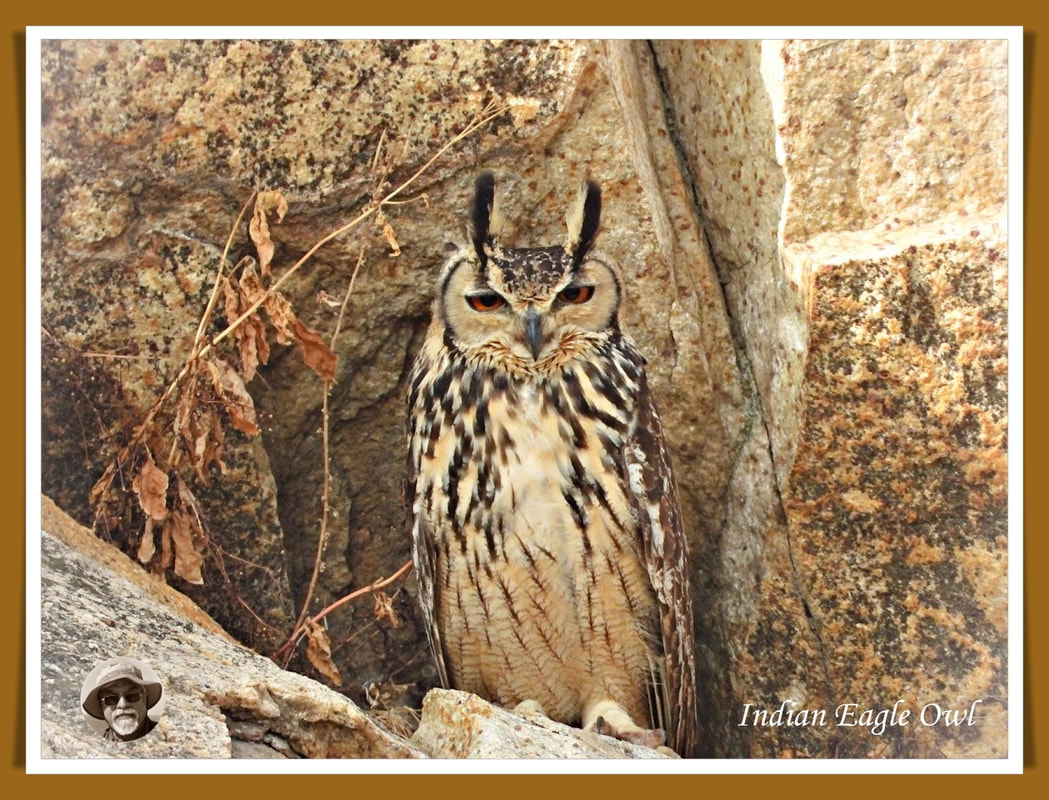I have a particular fondness for owls. We have had good sighting of them invariably in all our forays into the wild . But one particular species of owls, the Great Horned Owl or Indian Eagle Owl has evaded us in all our peregrinations in the wild.
42 Comments
Abha
3/6/2020 06:23:46 pm
Such interesting facts and amazing pictures on the link....
Reply
Dr Raguram
3/6/2020 06:51:59 pm
Thanks Abha!
Reply
Shiny
3/6/2020 06:28:25 pm
What should I say ? Such a great read and happy to know so many stories about 🦉...I only knew it's a bad omen ...
Reply
Dr Raguram
3/6/2020 06:52:57 pm
Yet at the same time it is considered to be an icon of wisdom Shiny!
Reply
Naveen
3/6/2020 07:34:54 pm
Lived through the descriptive moments..
Reply
Dr Raguram
3/6/2020 07:43:06 pm
Thanks Naveen!
Reply
Radhika
3/6/2020 08:47:22 pm
Such a wonderful account of your experience followed by stories and information. I have just glanced through it now. Will read through it again, at leisure.
Reply
Dr. M. Chandrasekaran
3/6/2020 09:47:27 pm
The write up, the subsequent comparisons, poetic and social - and finally the astounding pictures - कोई जवाब नही.
Reply
Dr Raguram
3/6/2020 10:04:22 pm
Thanks dear
Reply
Subramanian Sankar
3/6/2020 11:41:42 pm
Like your narration. The different colorful interwoven threads gives a pretty tapestry and capture our imagination.
Reply
Dr Raguram
3/7/2020 12:01:49 am
Thank you!
Reply
Mallika
3/6/2020 11:56:02 pm
Ragu and ahalya after the journey
Reply
Dr Raguram
3/7/2020 12:02:47 am
Ha ha! But it was a rocky terrain..too gingerly for us to dance!
Reply
Mala balagopal
3/7/2020 12:01:48 am
I am fan of an owl.saw this eagle owl in Bharathpur bird sanctuary .Your blog is Very informative and interesting. Thanks
Reply
Dr Raguram
3/7/2020 12:03:37 am
Thank you! You're lucky!
Reply
Narayanan Parameswarann
3/7/2020 01:13:32 am
Wonderful.lucid and keeps one interested till the last.how a friend of apair of lovers has turned into a dalit equivalent depicts the changing mindset of people though the object remains the same.
Reply
Dr Raguram
3/7/2020 01:29:03 am
Thank you...need to change the mindset about owls too!
Reply
Jagdish
3/7/2020 02:14:45 am
A good read.
Reply
Dr Raguram
3/7/2020 06:41:59 pm
Thanks Jaggu
Reply
Muthatha
3/7/2020 02:16:40 am
The photographs are beautiful Doctor! Thanks for sharing. Owls are almost mammal-like in my perception - perhaps it's their emotive eyes that make me feel so. Really enjoyed your pictures in this series.
Reply
Dr Raguram
3/7/2020 06:43:20 pm
Quite true...and when these big eyes look straight at you,it is a surreal experience!
Reply
Joy
3/7/2020 08:24:14 am
Awesome Dr. Raguram
Reply
Dr Raguram
3/7/2020 06:43:36 pm
Thanks Joy!
Reply
Shabbir Amanullah
3/7/2020 04:38:01 pm
Very nice!
Reply
Dr Raguram
3/7/2020 06:43:55 pm
Thanks Shabbir
Reply
Shalini Kurup
3/8/2020 02:37:54 pm
Fabulous narrative. And love your aside re parliament. Waiting for your book. Best wishes, Shalini
Reply
Dr Raguram
3/14/2020 03:58:48 am
Thanks Shalini
Reply
Vidya TNC
3/9/2020 02:47:19 am
Lovely account!
Reply
Dr Raguram
3/14/2020 03:59:52 am
With loss of its habitat, sighting of this majestic bird has indeed become scarce
Reply
Ajay
3/10/2020 04:42:47 pm
Thank you for this fascinating foray into the ethnobiology of the owl, loved reading about the different ways in which various cultures have related to them.
Reply
Dr Raguram
3/14/2020 04:01:39 am
Thanks Ajay. There are reportedly 11 owl species down under, but we were not fortunate to sight even one of them when we went birding sometime back
Reply
Saranya Devanathan
3/12/2020 09:09:36 am
Thank you for quoting old and new Tamil literature. Future Dr.O.Somasundaram.
Reply
Dr Raguram
3/14/2020 04:02:32 am
Thanks...not a patch on him though!
Reply
Mohan
3/21/2020 08:23:38 am
Dear Sir, Enjoyed your narration about the anticipation, disappointment, elation on the pursuit of the owl.
Reply
Dr Raguram
3/21/2020 08:00:22 pm
Thank you Mohan...we will surely catch up with the elusive one in Nanmangalam soon!
Reply
paavannan
4/2/2020 11:38:43 pm
Very nice. I felt very happy to understand the long, long history of owls. I enjoyed the quotes from Natrinai and Cho.Dharuman's novel. Ending the article with some lines from a good old rhyme is really enjoyable. It is really novel idea. More hearing and less speaking. True. All humanbeings are to follow this slogan. Photos are also very nice. Thanks to the Gaurd who took to the spot for watching them. When you have seen them actually face to face, we are lucky enough to see them through your images. Congratulations.
Reply
Dr Raguram
4/14/2020 05:43:24 am
Mikka Nandri Paavannan
Reply
Bharathi Mani
6/27/2020 10:16:46 pm
This post is priceless, thoroughly enjoyed reading it...
Reply
Dr Raguram
6/28/2020 05:18:12 am
Thank you Bharathi!
Reply
Ajit
8/5/2022 12:25:31 am
Lovely essay, Ragu.
Reply
Dhanapal
8/5/2022 08:39:56 am
Interesting and thoroughly enjoyed it
Reply
4/26/2024 12:19:46 am
Your destination travel guides are like trusted companions on the journey of discovery. With your expert recommendations and insider insights, navigating unfamiliar territories becomes an exciting and enriching experience. Thank you for being a reliable source of information and inspiration for fellow travelers!
Reply
Leave a Reply. |
Dr Raguram
Someone who keeps exploring beyond the boundaries of everyday life to savor and share those unforgettable moments.... Archives
May 2024
Categories |

 RSS Feed
RSS Feed